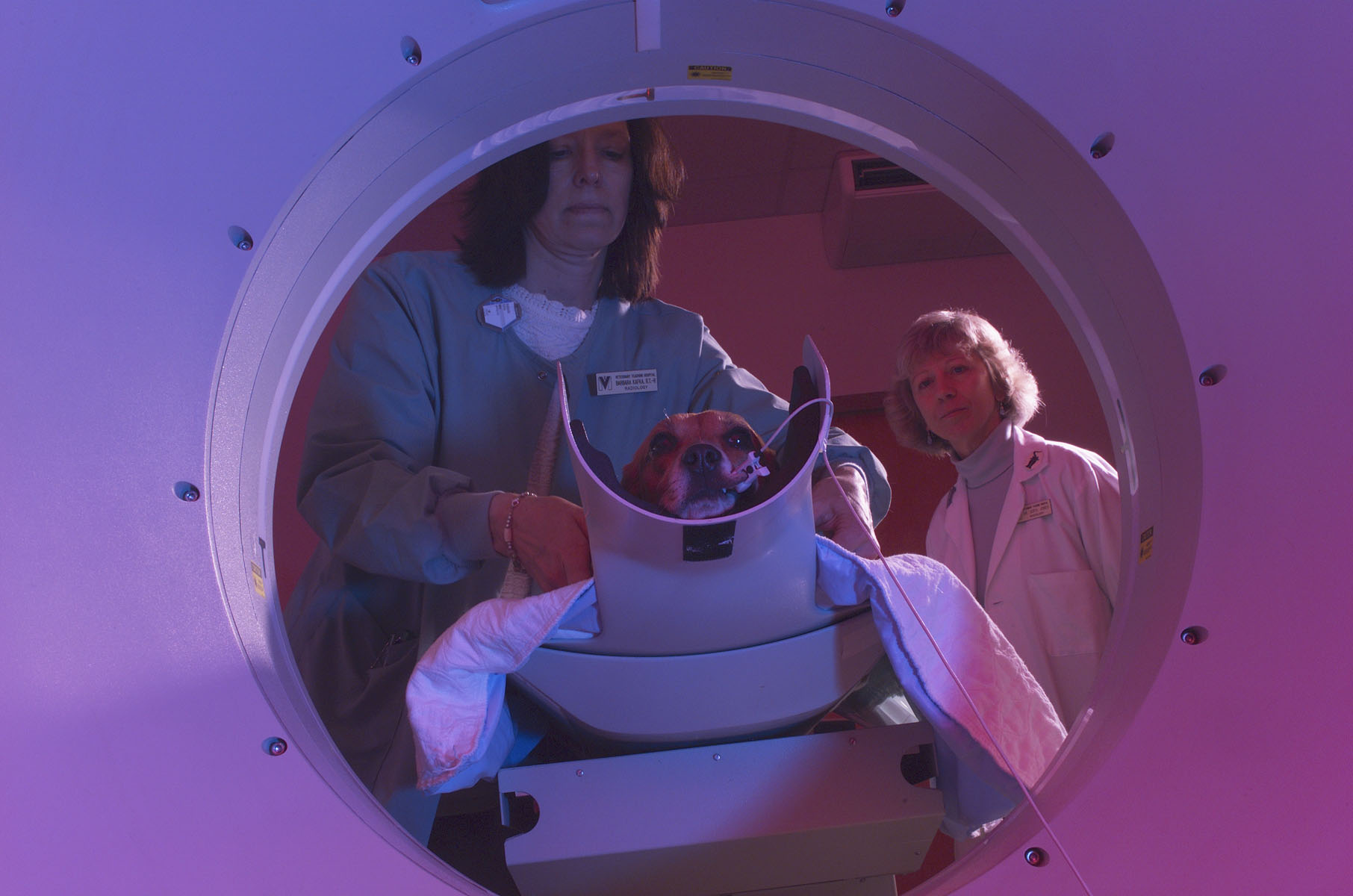Veterinary Teaching Hospital to launch small animal outpatient imaging service

Beginning in June 2009, the Virginia-Maryland Regional College of Veterinary Medicine at Virginia Tech's Veterinary Teaching Hospital will introduce a new outpatient advanced imaging service for surrounding small animal veterinarian practices.
The new service will provide weekly outpatient appointments for magnetic resonance imaging (MRI), computed tomography (CT) scans, and ultrasounds. The purpose is to provide a mechanism whereby a veterinarian in private practice could order advanced imaging procedures without giving up the primary care responsibility for the patient. This service will allow access to advanced imaging modalities that might not otherwise be available to general practitioners.
“The Veterinary Teaching Hospital routinely uses these advanced imaging modalities for diagnosis and to monitor treatment response. This new service will open access to these imaging procedures to our colleagues in private practice,” said Dr. Gregory Daniel, head of the Department of Small Animal Clinical Sciences and a veterinary radiologist, who has been spearheading the project along with Veterinary Teaching Hospital Director Dr. Bill Pierson. “We are happy to extend the scope of our radiology center’s services.”
The program will work much like those in the human-health world. If a veterinarian suspects his or her patient is in need of testing more advanced than what is available in the office, they can make an appointment for the patient to be seen by the outpatient service at the Veterinary Teaching Hospital. The test will be performed in hospital’s Horace E. and Elizabeth F. Alphin Radiology Center where a veterinary radiologist will interpret the image. The images will then be placed on a CD to be given to the owner and, within 48 hours, another copy of the images along with a report will be sent to the referring veterinarian who will then make plans for the patient’s care.
While the animal will need to arrive early on the day of the imaging for pre-procedural testing and may need time afterwards to recover from the sedative or anesthesia, depending on the which imaging modality is used, overnight hospitalization will not be required.
According to Daniel, the motivation behind the service is two-fold. First, the Veterinary Teaching Hospital is constantly striving to be of assistance to local veterinarians and to provide access to state-of-the-art technology and care. Second, increasing the imaging caseload will assist the hospital in funding the diagnostic equipment used.
“This new service is a win-win for both the hospital and local clinicians,” said Daniel. “The clinicians will have access to more sophisticated diagnostic equipment and the hospital will have additional revenue to help pay for our technology. We are very pleased to begin this service.”
Appointment details and schedule forms will be available on the college website later this month.




